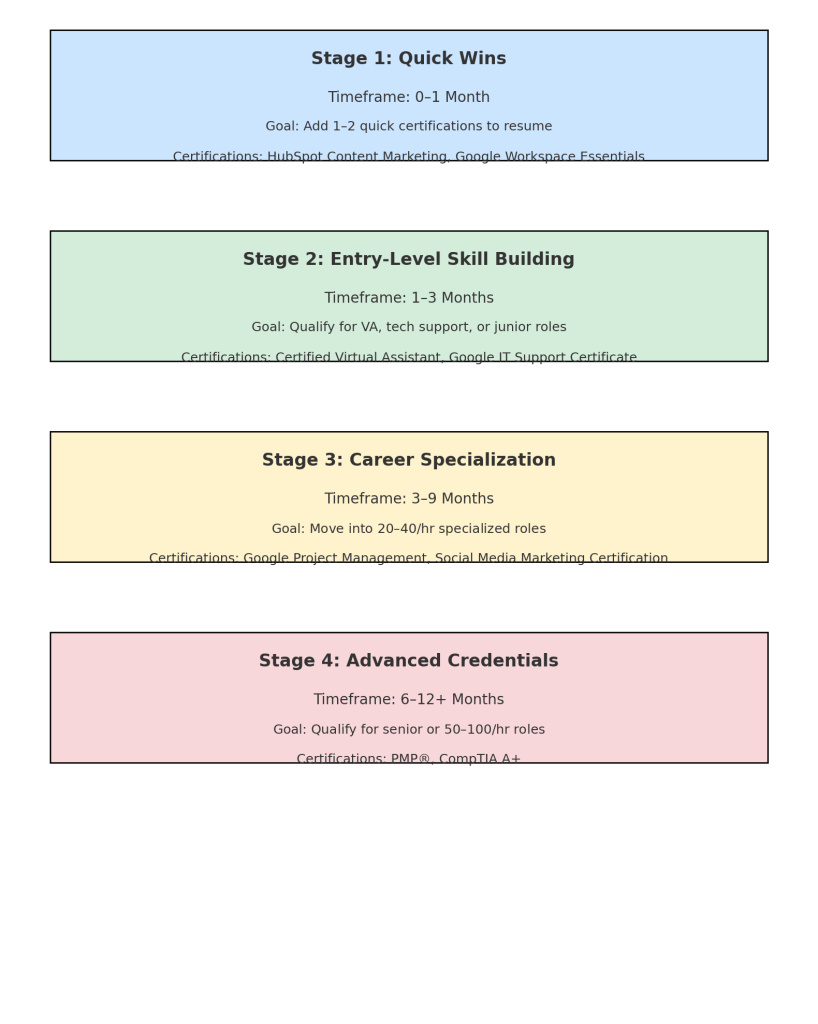
You don’t scale a bookkeeping firm by selling time—you scale by selling outcomes. Pricing isn’t just math; it’s positioning, trust, and the promise you can keep every month without chaos. This guide shows you how to move from hourly to value-based packages, price cleanups without losing your shirt, and defend margins while clients feel they’re getting a great deal.
Why hourly dies and value wins
Hourly rates punish efficiency, cap revenue, and anchor you to comparison shopping. Value-based pricing flips the frame:
- Clients buy predictability (a fixed monthly number) and clarity (the specific results you’ll deliver).
- You buy profit from repeatable workflows and specialization.
Think of it this way: your client wants clean closes, decision-ready numbers, and fewer fires—not 8.5 hours of keystrokes.
The offer architecture: Cleanup → Package → Advisory
1) Cleanup / Catch-Up (one-time)
Start every engagement here if historicals are messy. You can’t guarantee monthly outcomes until the foundation is clean.
- Deliverables: reconciled bank/credit cards, accurate opening balances, consistent COA, prior-period fixes, basic documentation.
- Inputs you price on: number of accounts, months to catch up, transaction volume, integrations, inventory/payroll/AR-AP complexity.
- Red lines: no “quick looks.” Quote from a paid Diagnostic (see below).
2) Monthly Package (recurring)
Three tiers make sense to decision-makers and map to complexity:
- Core (Close & Clarity): transactions, reconciliations, month-end close, P&L/BS/Cash flow, close by Xth business day.
- Operate (Ops Sync): everything in Core + AP/AR coordination, light collections follow-up, receipt capture QA, simple payroll mapping.
- Guide (Advisory Pulse): everything in Operate + KPI dashboard, cash-flow forecasting, quarterly planning call, lender/board-ready packs.
3) Advisory Add-Ons (modular)
Rolling cash forecasts, pricing models, grant budgets, job-cost reviews, property/debt dashboards, fractional controller cadence. Sell these as modules with their own cadences and boundaries.
How to set your numbers (without guessing)
Step 1: Define your “unit of work.”
Tie workload to objective drivers you can measure: accounts, transactions, entities, locations, properties, active jobs, channels/marketplaces, providers, grants. These become adders.
Step 2: Choose your floor and aim.
- Monthly floor: the minimum where quality remains high (often $450–$900+ for truly simple cases in 2025).
- Target ARPC (average revenue per client): reverse-engineer from income goal and capacity.
- Example: $20k/mo goal ÷ 18 clients = $1,110 ARPC. Price packages to average at or above that.
Step 3: Price the cleanup separately.
Use a fixed-fee cleanup priced from a paid diagnostic. A common range for small businesses is $1,200–$6,500+, but complex e-com, multi-property real estate, construction WIP, or nonprofit funds can be $8k–$20k+. The monthly package begins after cleanup completes.
The paid diagnostic (your best sales tool)
Offer a low-friction, fixed-fee Diagnostic & Plan that includes:
- Read-only access review, health scorecard, list of discrepancies, and a written remediation plan.
- A fixed cleanup quote and three package options.
- If they proceed within 30 days, credit part or all of the diagnostic to the cleanup.
This turns “Can you look and tell me how much?” into a productized step that protects your time and increases close rates.
Scope boundaries that protect margins
Put these in every engagement letter:
- Close date & inputs: “We close by the 10th business day if all docs arrive by the 3rd; delays shift the close.”
- Channels/entities caps: “Pricing includes up to X bank/credit accounts and Y payment processors.”
- Change triggers: new locations, properties, jobs, providers, grants, financing, or app integrations trigger a repricing conversation.
- Cleanup vs. monthly: “Historical errors discovered during ongoing work are quoted as separate cleanup.”
- Response windows: “Requests outside our response window (e.g., <24h turnaround) billed under Rush policy or covered in Advisory tier.”
Pricing by niche (examples that map to real work)
These are illustrative anchors. Your market, experience, and country will shift numbers.
E-commerce (Shopify/Amazon/Etsy)
- Drivers: channels, order volume, inventory complexity, ad spend reporting.
- Anchors: Cleanup $3k–$12k; Monthly Core $750–$1.8k; Operate $1.2k–$2.8k; Guide $2k–$4k+.
- Adders: each additional marketplace/gateway, weekly margin snapshots, landed-cost modeling.
Construction / Contractors
- Drivers: active jobs, progress billing, retainage, WIP cadence, field app syncing.
- Anchors: Cleanup $2.5k–$10k; Monthly Core $650–$1.6k; Operate $1.1k–$2.4k; Guide $1.8k–$3.8k+.
- Adders: certified payroll/prevailing wage, lien waivers workflow, weekly job-cost reviews.
Real Estate Investors
- Drivers: doors/properties/entities, STR vs. LTR mix, debt schedules, capex intensity.
- Anchors: Cleanup $2k–$9k; Monthly Core $600–$1.5k; Operate $1k–$2.2k; Guide $1.6k–$3.2k+.
- Adders: each 5–10 doors, refinancing projects, lender pack preparation.
Medical / Dental
- Drivers: providers/locations, PMS mapping, collections analytics, comp schemes.
- Anchors: Cleanup $3k–$12k; Monthly Core $900–$2k; Operate $1.4k–$3k; Guide $2.2k–$4.2k+.
- Adders: multi-entity DSOs, weekly KPI huddles, complex payroll integration.
Nonprofit
- Drivers: active grants/funds, board reporting cadence, audit prep scope.
- Anchors: Cleanup $2k–$8k; Monthly Core $550–$1.3k; Operate $950–$2k; Guide $1.5k–$3k+.
- Adders: grant BvA packs, allocation method support, auditor requests management.
Packaging that sells itself (and stops scope creep)
Name packages by outcome, not features:
- Close & Clarity – “Clean books and on-time closes you can trust.”
- Operate – “Finance ops synced with the business: bills, receivables, rhythm.”
- Guide – “Forward-looking visibility: KPIs, cash forecasts, planning.”
Under each, list 5–7 bullets max. Then a small “What’s not included” list, so upgrades feel natural rather than defensive.
Objection handling that preserves price
“Can you match a cheaper quote?”
“We might be a better fit once books are at the standard required for timely, decision-ready closes. Our clients stay 3–5+ years because this standard protects their cash and time. If budget is tight, we can start with Core and a lighter reporting cadence.”
“Can we start monthly without a cleanup?”
“We’ve learned we can’t keep our on-time close promise on an unstable foundation. The diagnostic will show you exactly what’s needed and you’ll have a fixed cleanup quote before deciding.”
“Can you do hourly?”
“We only price outcomes. If hours go down because we improve the system, you shouldn’t pay less for a better result—and if hours spike because a platform glitches, you shouldn’t pay more. Fixed pricing protects both of us.”
Renewal and strategic price increases
- Set the expectation on day one: “We review scope and pricing every 12 months based on growth and complexity.”
- Show your work: present a 12-month value recap (closes delivered, errors prevented, lender/board wins, time saved).
- Offer two choices: maintain current scope at new price or keep price with a reduced scope/cadence. Anchoring makes the higher tier reasonable.
Your quoting playbook (copy this flow)
- Fit Call (15–20 min): confirm niche, complexity drivers, budget realism.
- Paid Diagnostic: fixed fee; read-only access; health score; remediation plan.
- Proposal Meeting: present Cleanup + three packages; recommend one; define start date and onboarding checklist.
- Engagement Letter & First Invoice: e-sign + first month collected before kickoff.
- Onboarding Sprint (2–3 weeks): cleanup and SOPs; then slide into monthly cadence.
The quiet lever: service level agreements
SLAs remove ambiguity and increase perceived value:
- Close by Xth business day (with client input deadline).
- Response times (e.g., within 1 business day for email; within 2 business days for ad-hoc analysis).
- Scheduled touchpoints (monthly or quarterly reviews).
- Security baseline (MFA, password manager, encrypted storage) communicated upfront.




















